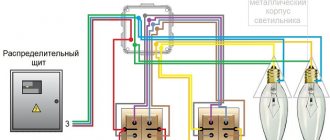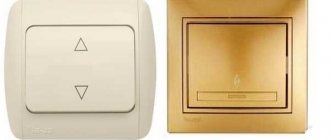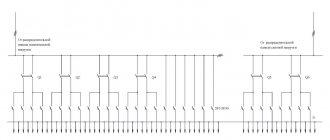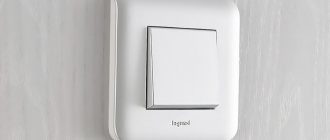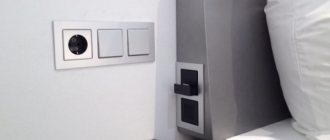- home
- Electronics
>
⬎
Sometimes there is a desire or need to control lighting remotely. Of all the options, the most practical, in my opinion, is radio control. In addition, the smart electronics market is mostly represented by radio-controlled devices. Many solutions that implement various smart home systems allow you to expand control methods using sound, motion and the Internet. However, the basis in such systems, as a rule, is a radio channel. By the way: it is not at all necessary to control the light - you can turn on other devices for your tasks.
There is a lot of this electronics in online stores and the illusion is created that everything is simple and clear... This is far from the case! All devices and systems have their drawbacks and are often very expensive. And as it turns out in the process of carefully studying the solutions: controlling one simple light bulb from the remote control, reliably and without “glitches” is not an easy task.
In this article we will look at popular remote control options, discuss the disadvantages and, of course, put in a word about the sound rationality of smart electronics in general.
Remote Controller
It is also called a “switcher” with a remote control - in addition to being controlled from the remote control, this device switches loads in different sequences when controlled from a regular switch. Designed to connect from two to four loads (depending on the controller model). Similar devices are used in modern chandeliers with many combinations of burning lamps (often without remote control).
This device essentially combines two components: a mode switch (“switch”) and the remote control device itself. The presence of the former, in my opinion, greatly limits the functionality of the device.
Why does the mode switch negatively affect practicality? It's simple: first of all, the entire controller is a device for switching several lighting groups using a regular switch, and radio control is a secondary function, a bonus. In other words, the device is switched on in series with a conventional switch and is not designed for direct connection or equivalent control from both the remote control and the switch.
If the device is connected directly, without a switch, then when electricity is supplied, the first group of lights will be turned on automatically. You can turn off the light only from the remote control. That is, when the power is turned off and then supplied, the first group of lamps will be turned on, without the owner’s knowledge. This is a very important point - lighting will depend on power outages. You come home, and the light, honestly turned off, is on without your knowledge.
When using this solution, there can be no question of any quality use! This device must be connected in series with the switch and the remote control must be used only when the contacts of the mechanical switch are closed. We can talk about reliable switching only when you can always turn on the light from the remote control and are not afraid that it will accidentally turn on due to problems with electricity. A truly high-quality solution can be considered when the light is controlled equally from a regular switch and from the remote control, without false switching on.
After all, the control panel can always get lost.
Based on all of the above, we can make a verdict: a remote control controller is acceptable only in chandeliers with several groups of lamps that need to be controlled by one switch key. For the big name “smart home”
— the device is too “stupid”!
Ideal for a classic cottage
In remote regions of Russia, the market offers a relatively small range of heating units. Most often, dachas are heated with compact stoves burning coal or wood; in the best case, the owners of such real estate can install a solid fuel boiler or electric radiators. But even with implemented systems running on diesel fuel and natural gas, universal automatic switching is not always provided. The only viable option in this case is to use electricity. But since the use of such heating units is quite expensive, it is better to use this method as an auxiliary one.
The remote control method allows one or several rooms to be heated to the specified level before the owner arrives, while ensuring the stable functioning of the sewerage and water supply systems. After which you can start the main heating system in a comfortable environment, but only in manual mode.
The evolution of modern technology
Receiver switch
The device is a touch or push-button light switch, additionally equipped with a radio signal receiver. Here we are talking about high-quality lighting control: mechanical on/off and control from the remote control do not depend on each other. Similar switches are found in some electronics manufacturers; in general, this is a rather rare solution implemented by any brand.
The range of such devices is small, let’s look at them briefly.
Simple devices include, for example, Wookee wk-317e
— load control up to 500 W, remote control range (according to the seller) 30 meters. The radio frequency of 433.92 MHz is standard for most radio light control devices. The switch is quite bulky and requires a non-standard installation box (socket box). The kit includes a control panel, which apparently cannot be replaced with another device. Unfortunately, there is no information on whether the switch requires a neutral conductor.
Receiver switches from Legrand Celiane series
have more advanced options - they can be controlled not only from the remote control.
The device has the function of a full-fledged radio relay and can work with various transmitters - remote controls in the form of a regular switch, motion sensors and Internet signal translators. Naturally, all these devices are supplied by the same manufacturer. Some receiver models support dimming. Among the disadvantages, it should be noted that this device is quite difficult to find, and also that the receiver switch requires a neutral wire
. The presence of a zero can become a serious obstacle when installing in an already equipped place for a regular switch (after all, a zero is not provided).
During the search process, I managed to find the best solution, in my opinion - a switch from Aliexpress Smart Switch
. The switch is mounted instead of the usual one, a neutral conductor is not required! The touch switch is produced in various colors and can have up to three independent control groups. A four-button compact remote control or other device (like Legrand) is purchased for the device. It is worth especially noting that the four buttons on the remote control can control many light groups and several switches; the switch itself is easily programmed to the desired key. There will be a short review about this model soon. The device does not switch on during power outages.
In addition to Legrand and the “unnamed” Chinese device, there are other manufacturers, for example Brenin
Mount Switch. This device can also be used as part of a smart home - with a remote control, various sensors and switches. However, I was unable to get competent technical advice on their supposedly official website. There are suspicions that they do not have a dealer in Russia, and that the site was created by some charlatans.
But on the noolite
“Nootekhnika” is quite possible to get advice from a competent specialist.
But, unfortunately, they do not have a ready-made solution in the form of a switch-receiver. However, there is an SB-1-100
- it is connected to the lighting circuit break (zero is not needed), like the devices described above, and is also connected to any push-button or conventional type switch. The block itself is mounted in the mounting box under the switch itself. The unit is compatible with all noolite smart home devices - remote controls, sensors and wireless switches. Capable of operating in two modes (selected during installation): relay, when the switch is only on. or off and dimmable, when the brightness of the lamps is smoothly adjusted.
All described devices consume a miniscule current from the circuit even when the lights are off. Therefore, when using energy-saving or LED lamps, chandeliers and lamps must be bypassed with a 0.1 - 0.2 µF capacitor. Otherwise, the lamps may glow dimly or flicker. Read more about glowing and blinking LED lamps
Typically, a bypass capacitor is supplied with the receiver switch.
Using the devices described above, a light control circuit based on the principle of pass-through switches is very simply implemented. The receiver switch is connected instead of a standard switch, and the remaining control points are implemented using remote switches (transmitters). The disadvantage of such a system is that additional control points (transmitters) require batteries. Well, an undeniable advantage is that there is no need to run wiring to the transmitters.
Multifunctional Wi-Fi
In this case, experts recommend using Energy Control. You can download this program to any phone, which stands out for its versatility and practicality. The purchased unit is connected to the router and provides a good connection to the Internet. At work or while driving around the city, you can control convectors, adjust the air temperature, and monitor the performance of the entire system. You can simultaneously make all the necessary corrections from more than 250 smartphones.
Important! Today, Nobo is the only company that is actively working in this industry. Specialists continuously modernize and expand the functionality of the equipment they sell.
The video provides instructive information on how you can remotely control your home heating:
Radio relay
May have different names, including “power block”. In general, to be as precise as possible, a radio relay can be called any device that can receive a radio signal and switch various loads. All devices described on this page are radio relays. However, it is the devices described below that are most often referred to as such.
They are blocks for installation in a panel, on a DIN rail or other fastening. By and large, these devices resemble receiver switches with wider options. Power units have a large number of controlled channels (number of loads), greater sensitivity to radio signals (not always necessary) and higher load currents (depending on the model).
These units, as a rule, do not turn on spontaneously during power outages, but they have many disadvantages. Firstly, loads can only be controlled from the transmitter. You can solve this problem by installing a wireless switch (transmitter). Secondly, this unit is problematic to put into operation where the electrics were designed without taking radio control into account - after all, the device needs a shield, and therefore all light lines must come directly to the shield. This greatly complicates the installation of electrics already taking into account this element.
Among other things, these units are the most expensive of all radio-controlled devices. It remains a mystery to me what the manufacturer is counting on when selling a not very functional device for such money. But here, of course, everything depends on the specific case; perhaps in some situations this is the only acceptable solution.
Carrying out control stationary, as well as using SMS commands
To turn on the heaters in a timely manner, you need to place a classic SIM card in the module. The necessary command is transmitted from any smartphone, after which the device will communicate with the control unit and the convectors will be configured via radio signal. You can also install a universal program, thanks to which you can specify the following parameters: on and off times, room temperature. In remote mode, you can completely reconfigure the system. In addition to this, the unit is equipped with outputs for connecting to alarm sensors.
An accessible and easy-to-use device
Controller in base
It does not have wide functionality, but is easy to install. You don't even need a screwdriver to install the controller! Instead of a lamp with an E27 socket, this device is screwed in, which in turn has a socket for an E27 lamp. There is an obvious dependence on the wall switch. Controllers are available with and without dimming. For example, let’s take devices from the “Cozy Home” series from - the cartridges are programmed to the desired keys of the remote control with a special button, the range is 30 meters, the frequency is 433.92 MHz.
The “cozy home” line also includes plug-sockets that work in a similar way.
Brief overview of the equipment
The first step to remote power management is purchasing the right equipment. A full-fledged power management system consists of five components, for each of the points a sample will be selected to draw up an assembly diagram:
| Type of equipment | Name | Peculiarities | Price |
| Communication module | GSM/GPRS modem "ARIES PM01" | Automatic reboot at variable intervals. Connection via RS-232 or RS-485 interfaces. Communication channels: GPRS/CSD/GSM. | 4,500 rub. |
| Programmable controller | Logic freely programmable controller "OWEN PLC 100" | Freely programmable. No pre-installed OS. CodeSys software environment with high compatibility. Four communication interfaces. | 9,000 ~ 10,500 rub. |
| Load switching | ABB ESB-20 modular contactors | 1,500 rub. | |
| Circuit breakers ABB S201 | 300 rub. | ||
| Differential automatic machine ABB DSH941 | 2,500 rub. | ||
| Environment Analyzers | Contact type sensors Semiconductor sensors Pulse counters | Limit switches: 600 rub; Reed sensors: RUB 1,400; Temperature sensor: 800-1100 rub. | |
| I/O module | Discrete input/output module "OVEN MDVV" | 12 discrete inputs and 8 outputs, operating in combined mode: electromagnetic relay, transistor switch, open collector. | 5,000 rub. |
Controller ARIES PLC 100
Remote control systems also use many peripheral devices:
- UPSs remain operational when the power is turned off.
- Relay automation blocks make the execution of commands safe.
- Software scenario generators expand the controller's capabilities.
- Wireless communication modules allow unlimited expansion of the system.
- User graphical interfaces make it possible to configure equipment without connecting to a PC.
A little philosophy
Of course, controlling the light without leaving the couch is interesting and exciting... the first minutes of use. In practice, it soon becomes clear that in most cases this is an unnecessary function and no one uses it. There are rare cases where remote lighting control is truly relevant and acceptable. Therefore, you should not tie your entire life to the remote control. Think about it: if machines do everything for us, what will be left for us? Lie and die on the sofa... with a remote control for everything... Common sense says: there is no need to improve something that already works perfectly - an ordinary wall switch! Actually, that's all.
GSM alarm system with wireless sensors
GSM alarms:
3G cameras, video surveillance:
GSM control:
Safety and comfort:
Automation:
(812) 642-09-46 (921) 797-90-56
Opening hours: Mon-Fri: 10:00 - 19:00 Sat: 11:00 - 18:00 Sun: Closed (delivery available)
GSM alarm system for cottages
Controlling electrical appliances using a computer or mobile phone
— Control from anywhere in the world where there is a cellular operator Using the GSM system, you can build a network of full or partial control over an object via cellular communications. Thanks to this system, you can remotely control the switching on or off of various electrical appliances.
— Simple and intuitive control Call the GSM controller and in tone mode give a command to turn on or off the necessary equipment, or send an SMS message with such a command.
— Temperature control and automation You can easily control the boiler, convectors or any other electrical devices. Control the temperature, turn the heating on and off automatically or at your command, control electricity and temperature.
The GSM control system can be assembled for any task
— To understand which equipment is right for you, answer the questions: 1. How much equipment do you want to manage 2. What is the power of this equipment 3. What is the year-round temperature regime at the facility (is it always plus or minus in winter) 4. Planned budget
Security functions and GSM alarm system
— You can connect any security and fire sensors and use the system as a full-fledged GSM security alarm system. All this without a monthly fee, you only pay for the services of the telecom operator at regular rates.
Simpal D210 is a GSM controller with which you can remotely control equipment with a load of 16A, 3500 W.
The GSM leader is a GSM controller, with which you can remotely control equipment with a load via two channels.
Sonoff G1 GSM GPRS switch, with which you can remotely control equipment with a load of 16A, 3500 W.
A new system that allows you to control heating and electrical appliances.
Using 7 temperature sensors (1 built-in and 6 additional remote wired ones), you can regulate the temperature in different rooms.
This is also a full-fledged GSM alarm system.
It automatically controls the operation of the boiler, monitors its technical condition and signals when an accident occurs or the supply voltage is cut off.
The iSocket GSM 707 smart socket is designed to remotely switch electrical equipment connected to it and has some additional useful features. This GSM smart socket is controlled remotely via GSM network using a regular mobile phone using SMS commands. It is also possible to carry out some operations by calling from a phone. Notifies you when there is a power outage.
From theory to practice - an example of a simple but functional circuit
The ES-ForthLogic communicator was mentioned above, as well as a list of devices including a modem, controller and I/O module. Let's look at them as an example of assembly and make sure that the capabilities of individual solutions are superior to standard automation solutions.
Assembly is carried out in a modular box for 36 places: first, power wiring and switching equipment are installed, then telemetry devices and low-current conductors are installed. Electrical assembly diagram:
This assembly allows you to remotely activate any of the operating modes of the pumping station in the pool, heat the water, fill the heating system with coolant and warm the room, turn on lawn watering or individual sections of drip irrigation, illuminate the yard and area, activate the procedure for walking or feeding dogs. The beauty of the assembly is that it is quite simple and interesting to program using the manual, because all the elements are completely compatible.
Redrick Shewhart, rmnt.ru
Advantages of DV
- Ease of use.
- Easy to connect with your own hands. Replacing a conventional switch with a radio or infrared remote control simplifies installation.
- Functionality. You can choose devices with dimming and switching on according to special programs.
- Possibility of operation of some models on several channels. No need for multiple switches. The usual switching off and turning on can be left if there is a need to work manually.
How to disassemble a light switch
Outdoors, you can control lighting from a remote control at a greater distance (up to 100 m). There is no need to go to the end of your garden plot to connect a lantern or lighting. There is no need for complex installation and wiring. It is enough to replace the usual standard switches with radio-controlled remote controls and carry out a simple setup with your own hands according to the instructions. More powerful loads such as a water pump can be turned on directly from the house, for example, to water a plot or fill a storage tank.
Typical connection diagrams and ready-made solutions
It is almost impossible to list all the possible uses of GSM controllers in the home. Modern SCADA systems are so diverse that they allow you to solve any household problems without exception. Standard complexes, such as XITAL GSM or ESIM120, do an excellent job with general tasks such as controlling lighting or heating. With them everything is simple: the controller is installed at the actuator and controls the power through a relay output.
Cons: you have to equip each node with a separate control module, which means confusion with mobile numbers, limited capabilities and the lack of a single control center.
There are more advanced circuit options, but you will have to assemble them yourself. Let's look at just a few typical options.
The controller performs the task of greenhouse and garden irrigation, is connected to a common control system, and is controlled remotely through it. It is possible to execute both commands and program scripts. Relay blocking will prevent an accident due to user error.
A powerful, freely programmable controller and several I/O modulators control all systems in the house, including security and alarm systems. This is one of the most advanced schemes that can be successfully integrated into a smart home system.
Sometimes one single device is enough, which is simultaneously a modem, a controller, and an I/O module. Control scheme based on the ES-ForthLogic communicator.
SMS exchange, Android app or remote desktop
It is better to decide in advance how advanced the user interface of the remote control system will be. If we are talking only about heating, a simple SMS exchange will be sufficient, during which command codes are transmitted to the boiler, to which it responds either with a report or by turning on the actuator. Command codes may be preset on the device, although most devices can change the default values.
More advanced interfaces use data exchange via a GPRS server. The user can use any of the available control channels. For example, while away from home, he can control the controller through a Windows utility, monitor the system status through an Android application, and use CSD dialing to open the gate.
As for the software of the devices themselves, they do not lend themselves to strict classification and critical evaluation. The fact is that each manufacturer uses its own development environment. Naturally, each device is equipped with a detailed manual for programming, configuration and parameterization, but understanding it can be quite difficult. The situation is aggravated by the partial incompatibility of equipment from different manufacturers with standard presets of program memory. Of course, no one bothers you to try your hand at logic programming, and if you fail, contact an experienced specialist.
